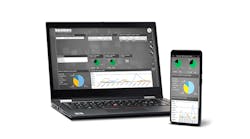There was another revelation in those early days of digital integration: To fully exploit the capabilities of digitally integrated field devices, the field people needed to touch the DCS. This was met with a little consternation, but the field instrument person and the house DCS specialist were usually able to work it out. What we should have learned from those early days of proprietary protocols, among other things, was that the hallowed ground of DCS-touching would have to be opened up to a more proletarian technician.
But what about the commissioning phase of a project? This is the ideal time for the uninitiated to experiment with their roles and understand the potential ramifications of one action or another. The opportunities are greatly magnified during commissioning and site acceptance test (SAT) phase. This is a chance to see issues and symptoms that may only manifest once a year or once every 10 years during normal operation—the ideal time to get technicians and operators acquainted with the power and limitations of the chosen technology. Let the plebs touch the DCS, for cryin' out loud! Immerse every eventual user of the digitally integrated field devices in commissioning.
Easy Commissioning Rule 1: Train your installers. If they don't know or care to land wires reliably, find out before termination number 10,000. Ruthlessly train and/or stamp out lousy craftsmanship before it impacts the field.
Easy Commissioning Rule 2: Invite all the ultimate owners and stakeholders to the party—all the people tasked with configuring and minding the DCS, key operators who are supposed the keep the place running when all the contractors go home, and all the technicians who are expected to come out in the middle of the night to fix something. This is everyone's chance to learn together, learn from the vendor reps and learn what is "safe" and isn't. This can take place while progressing the project quickly and with zero impact on production. Once the process-plant ship has set sail, our liberty to explore and experiment is greatly curtailed.
Easy Commissioning Rule 3: Lose the blasted calibration trailer. For a small sum—about $25 each—you can pay your trusted instrument supplier to deliver every device with a certified calibration certificate. Ironically, you're paying it to do something it does anyhow. In its ultra-pristine lab, it can apply traceable standards, and certify your device is accurate and drift-free for a period of years. How exactly does someone with a trim-pot screwdriver in a trailer add value? I think the risk of introducing random inaccuracy and error is much greater than just opening the box and installing the device. Calibrate smart positioners in place.
Easy Commissioning Rule 4: Unless warranted by systemic failures, troubleshoot by exception. If the host and devices are communicating without errors, you're nearly done. Once you verify tagging, you may wish to do a random survey of terminal torque, tug-tests or test for shield ground loops. Get some baseline data from bus tools. If your installer is going too fast, and/or using labor whose skills are lacking, you may just have to send them back to square one. Use modern physical layer diagnostic tools, and you'll catch and solve such issues long before the traditional 4-20 mA loop check.
These simple rules all deal with freeing oneself from the old 4-20 mA paradigms. Next month, we'll discuss how new wireless technologies like the mobile worker can further streamline your commissioning efforts.






